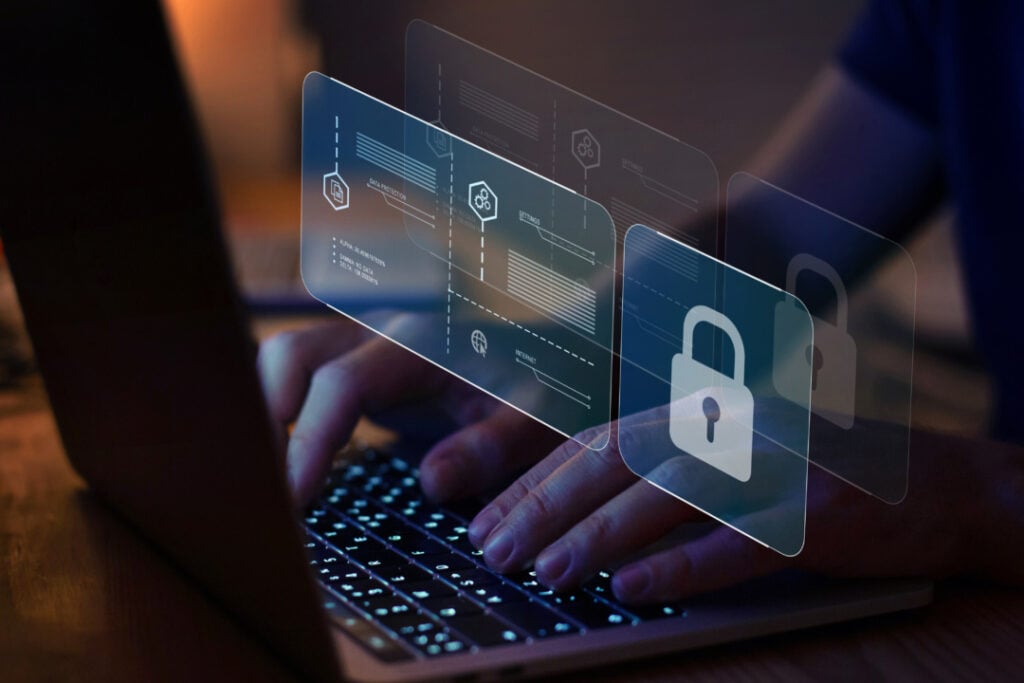Virtual event platforms have been the pillars supporting businesses, organizations, and individuals in connecting to other people in today’s digital age. They enable virtual meetings, conferences, webinars, and even huge online events. As with any other online activity, these present some risks, mainly those touching on cybersecurity.
Cyberattacks on virtual event platforms can result in leaked sensitive information, disrupt events, and cause massive losses financially and in reputational damage. This article discusses some of the key cybersecurity strategies a virtual event platform needs. It highlights practical methods for securing digital gatherings for event organizers, platform providers, and users alike.
The Importance of Cybersecurity in Virtual Events
Suddenly, this has brought gatherings and events into the virtual world with all their new opportunities and new vulnerabilities. By their very nature, virtual platforms connect thousands of people who often handle confidential communications, personal information, and even financial transactions.
Cybercriminals increasingly target these platforms for exploitation of weaknesses, a development that highlights the need for robust cybersecurity measures. Guardio reviews, for instance, provide insights into effective strategies and tools to enhance digital protection. As virtual events grow in scale, the need for comprehensive cybersecurity strategies increases to safeguard against hacks, breaches, and other kinds of cyber threats.
Key Cybersecurity Strategies for Virtual Event Platforms
There are various cybersecurity practices that the organizers and the platform provider should embrace to ensure security and smooth processes in every virtual event. The best strategies follow.
1. Multi-Factor Authentication (MFA)
The easiest but, at the same time, most effective way to improve security for virtual event platforms is to implement multi-factor authentication. The user will be required to confirm his identity through various verification methods, like entering a password and confirming with a code that comes to his phone. This additional security layer will make unauthorized access significantly difficult, even when passwords are compromised.
Additionally, this approach helps organizations minimize the possibility of unauthorized users joining or disrupting their virtual events. Also, MFA secures the user account in cases of breaches, as its use authenticates participants.
2. End-to-End Encryption
Encryption is a foundational cybersecurity measure that encodes information so it will be readable by only those having particular access. E2E encryption ensures that no data, from the event owner to the participants, is kept private and viewed en route. This essentially ensures that no communication through chatting, video calls, or sharing files within virtual events can be intercepted or viewed by any unauthorized third-party vendor with E2EE.
Most of the reviews stressed that end-to-end encryption of any virtual communication is important. Therefore, virtual event organizers should include in their priority list only those platforms that can offer E2EE to protect highly sensitive information resulting from a virtual event.
3. Access Control and Permissions
Not all users require the same level of access to a virtual event. Establishing some access controls and permissions serves to reduce certain security risks. By enabling the organizer to assign different roles like host, co-host, or viewer, only those who are authorized will have access to sensitive features such as screen sharing, chatting, and even file transfer.
Some even allow organizers to lock events on commencement so that no one else can join. This approach is particularly effective during small, private events where adding attendees may ruin the flow or even the security of the meeting.
4. Regular Software Updates
Cyber threats continually evolve, and outdated software makes virtual platforms more vulnerable to such attacks. Updates on software are strongly required since most of the updates contain patches for known vulnerabilities in the code. Event organizers and users in any form should use the latest versions of software before joining and hosting events respectively.
Furthermore, providers should constantly check their systems for vulnerabilities to quickly release an update against impending harm. Keeping up with the latest security patches reduces the risk of cyberattacks for users and providers.
5. User Education and Awareness
Human errors are at the forefront when it comes to security breaches. Cybersecurity training among participants will, as a matter of fact, go a long way in reducing such risks with virtual events. Remind participants not to make meeting links public and not to click on suspicious links, which would help protect the event.
Organizers of events may want to provide, in advance, a brief security guide to all participants on the best practices to be followed. This proactive approach, along with reducing any risk that may arise, contributes to creating a culture of security awareness among users.
6. Network Security and Firewalls
A safe network forms the grounds of every cybersecurity policy. Organizers should host virtual events on secure networks that can block unauthorized access through a firewall. Other good ways to make network connectivity safe are VPNs (Virtual Private Networks), especially for participants who involve participants from various locations. VPNs hide the IP address and encrypt internet traffic, adding a privacy layer.
In case high-security virtual events are required, this can be enhanced further by not making use of public but dedicated private servers. This will minimize the chances, particularly relevant for sensitive or high-profile events, of any sort of cyber-attack.
7. Secure Data Storage and Management
Virtual events often involve sensitive information, such as attendee lists or recording and document storage. Because of this, such data needs to be safely kept and managed appropriately. A platform provider should securely store data through encryption solutions and implement measures of access control against unauthorized access.
Organizations could also consider developing a data retention policy that outlines how long the data must be stored and when it needs to be securely deleted. This way, event organizers minimize the risk of data breaches while remaining compliant with data privacy legislation requirements.
8. Incident Response Planning
Even with maximum preventive measures, incidents still happen in the sphere of cybersecurity. An incident response plan provides clarity and lays out a structure on how security breaches are dealt with. Virtual event platforms have an incident response protocol on the ground, showing steps to be taken in case of a security breach, steps to mitigate damage, and notification to concerned parties.
On the side of event organizers, having a response plan in place is an equally key issue. It could be an immediate action to be taken, for instance, shutting down an event or isolating the affected user, but also further long-term investigations, like reviewing the incident to improve security during subsequent events.
Examples of Security Best Practices in Action
Some virtual events platforms have already implemented quite efficient cybersecurity strategies that serve as a good example for others:
Zoom: After some chiding for “Zoom-bombing” attacks-added end-to-end encryption along with better controls for meetings. All these continuous upgrades of Zoom with various security features have made it more resistant to cyberattacks.
Microsoft Teams: The Microsoft Teams Integration includes appropriate controls around access, encryption, and data management practices for professional and organizational uses. Teams administrators can see users’ activities and apply security-enhanced settings.
Webex: Suggests several layers of security, among them the encryption of data, safe file sharing, and, in general, more granular administrative controls to better manage and empower the security settings of the organizers of events.
Tips for Choosing a Secure Virtual Event Platform
It’s not easy, though, to make that choice among many varieties of such virtual event platforms with cybersecurity features. Here are some tips:
Research the platform’s security features: Look for platforms that provide MFA, E2EE, and customizable access controls.
Read reviews: Feedback from other users, such as Guardio reviews, might expose the real in-field security performance of the platform.
Check compliance: Make sure the platform complies with relevant data protection regulations.
Test the platform: Do a dummy run of the event in advance to see where possible security gaps may arise and get familiar with the security settings.
The Role of Participants in Cybersecurity
While a lot of the responsibility rests with the platform providers and event organizers, there is much that participants can do to help. Here are some best practices that will help attendees make sure the environment remains secure:
Use strong passwords and enable MFA: Have a unique, strong password for the account, and turn on two-factor authentication if available on the platform.
Stay vigilant: Be cautious with suspicious links and suspicious activity on chat and alert the host as soon as possible.
Avoid sharing sensitive information: Only share personal or financial information if absolutely necessary and only through secure channels.
In Closing
In the modern world, cybersecurity is a major concern for virtual event platform usage. The increasing incidence of online events should be the required base for strengthening cybersecurity through more comprehensive measures. For this reason, multifactor authentication, encryption, controls of access, periodic updating of systems, and good data management by both organizers and participants will be necessary to protect virtual events from possible threats.
Be it a business conference, teaching webinar, or social engagement, all those cybersecurity practices put together will make the event run smoothly and comfortably for any person involved. Safeguarding virtual events is, ultimately, not all about technology but about collaboration amongst providers, organizers, and users, where everyone has played their part in creating safe and trusted digital landscapes.
Caroline is doing her graduation in IT from the University of South California but keens to work as a freelance blogger. She loves to write on the latest information about IoT, technology, and business. She has innovative ideas and shares her experience with her readers.




![‘Jay Kelly’ Review – Noah Baumbach Makes A Case For The Magic Of Movie Stardom [NYFF 2025] ‘Jay Kelly’ Review – Noah Baumbach Makes A Case For The Magic Of Movie Stardom [NYFF 2025]](https://cdn.geekvibesnation.com/wp-media-folder-geek-vibes-nation/wp-content/uploads/2025/11/Jay-Kelly-JKELLY_20240523_15320_C2_R-300x180.jpg)

